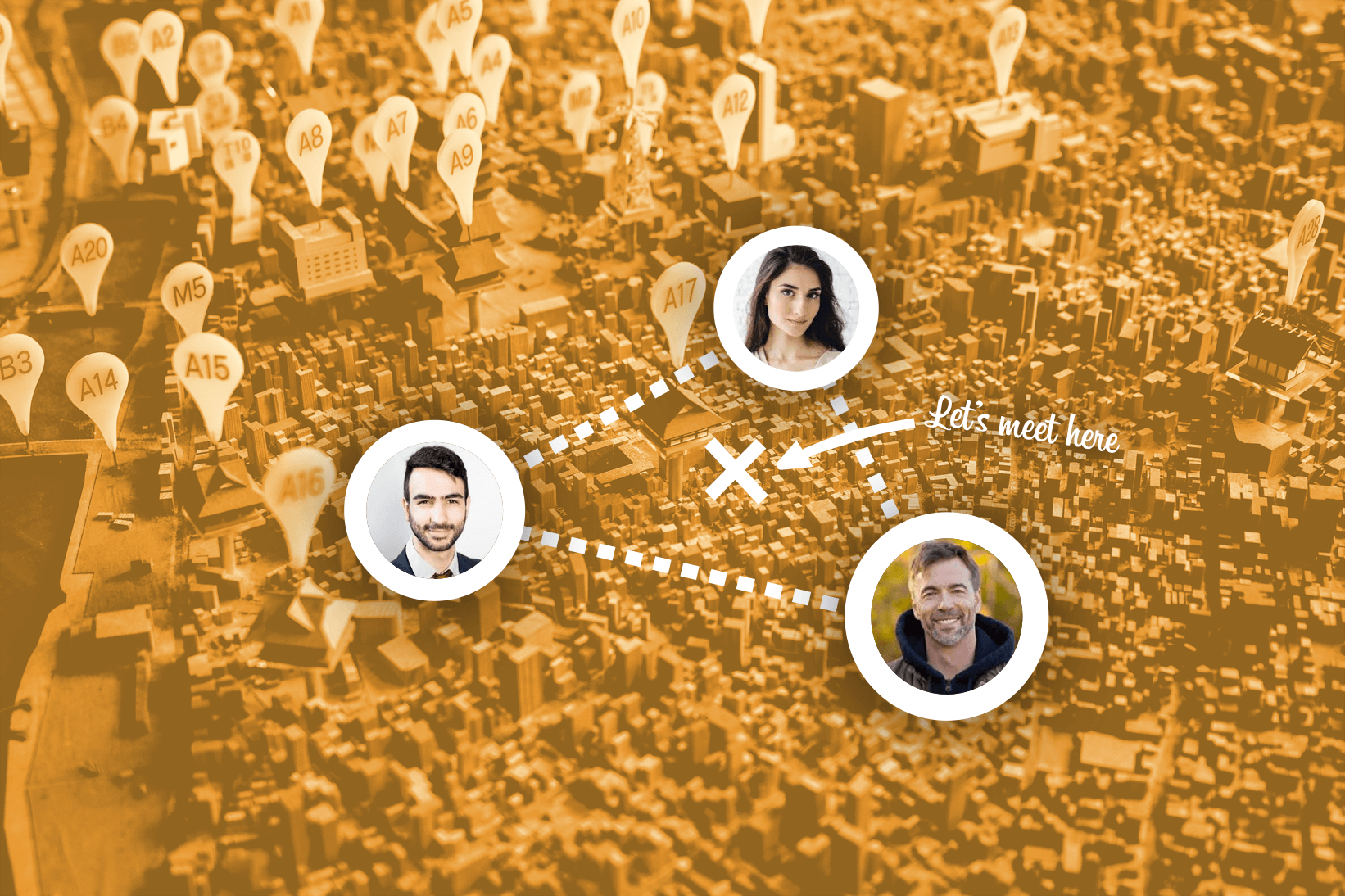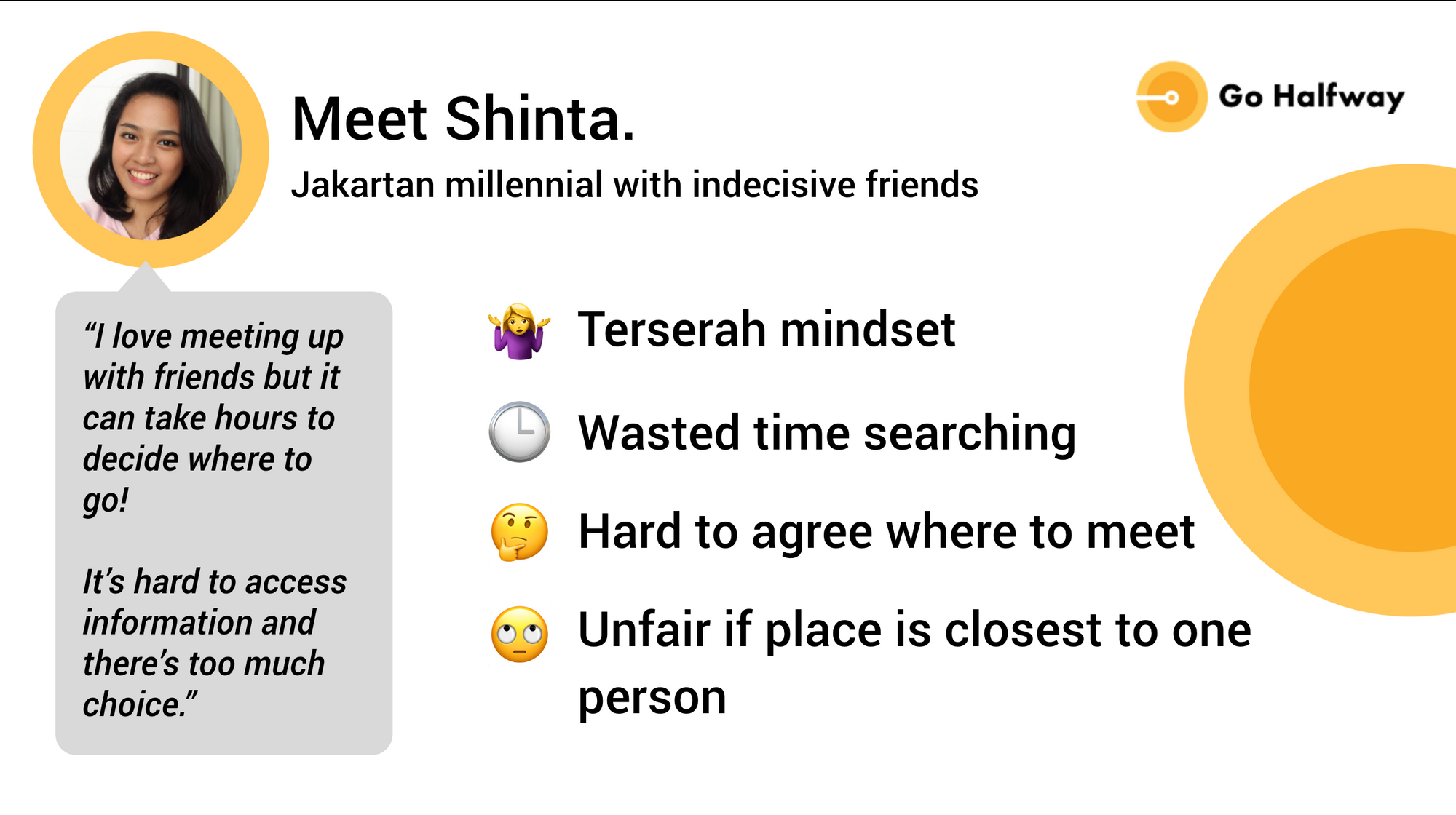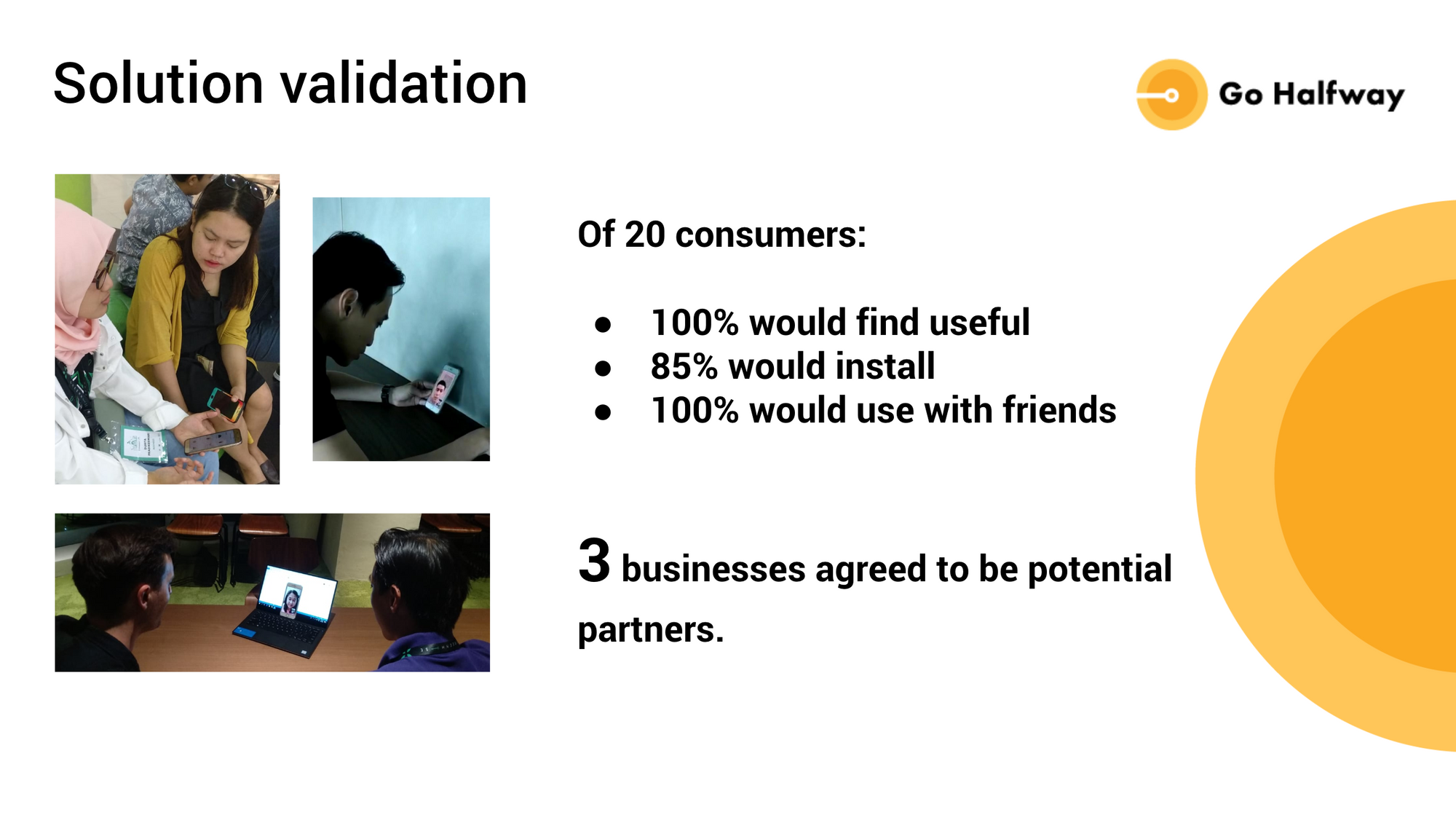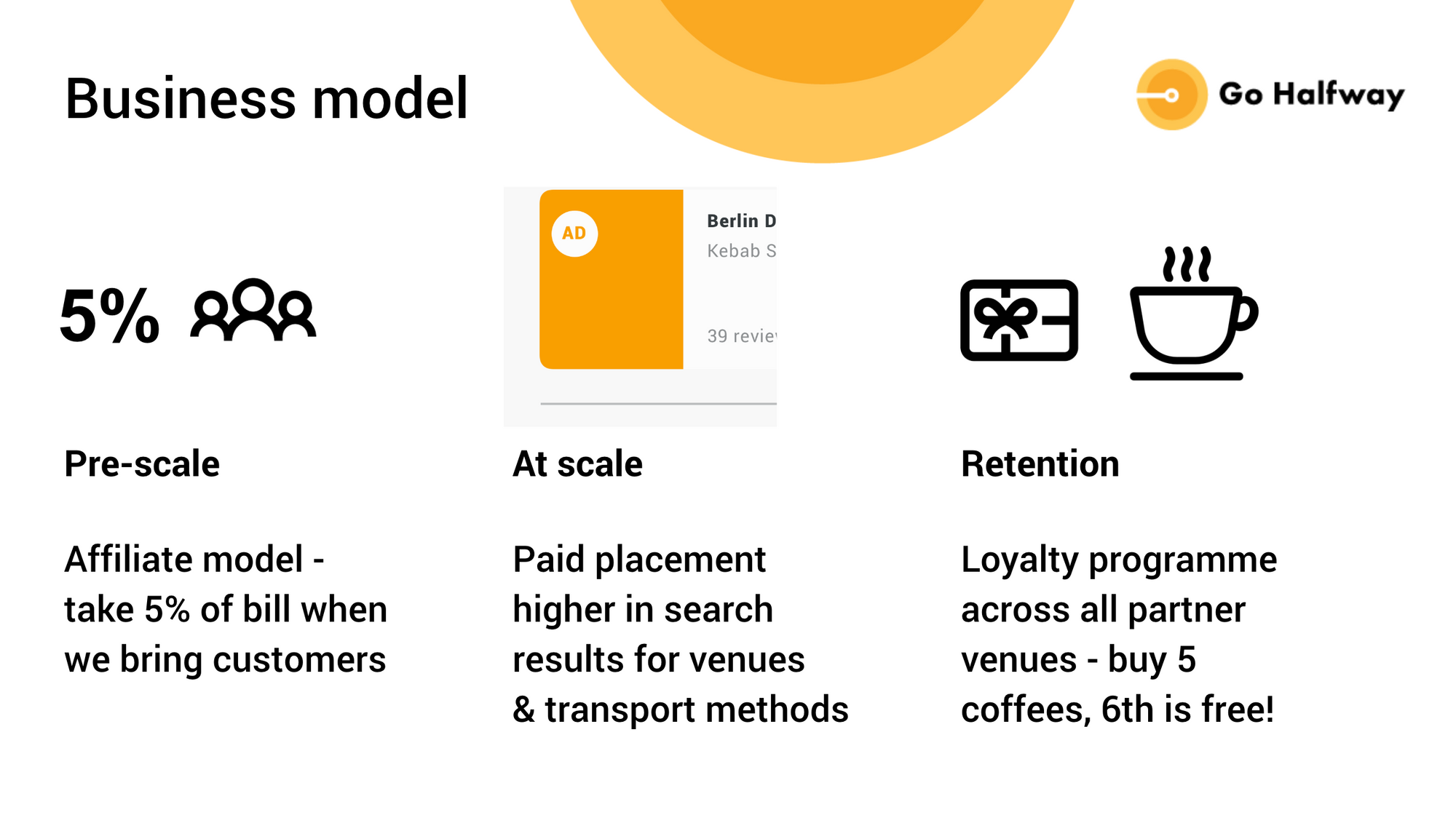Startup #4: Decide on where to meet up, halfway between everyone

What is startup #4?
This startup tackles a problem I often found living in a large city like London. When meeting friends or a business contact, one of the substantial tasks is actually choosing where to go... not just the place but also where in the city.
This is where a big city catches you – there's actually too much choice, hundreds of options in every direction. In addition to this, everyone lives spread apart... so really any area of the city could be an option.
Given the distance between people, it's often fairest to choose somewhere in-between everyone... but where is the middle of everyone? With how a city is sliced up by public transport, somewhere can look reasonably close and still take over 30 minutes.
Lastly, that middle-ground is often the area that no-one really knows well. Sure it's in the middle of everyone, but what is actually there for your activity? (Cue wandering the streets of that area).
It's already something of a running joke how hard it is to arrange to meet friends quickly, so making it easier in everyone's busy lives seems worth exploring.

So to validate and explore this idea, I took it to Startup Weekend Jakarta.
This meant that in the space of 54 hours, I would have to try to make a team of local collaborators, build an MVP, define a business model, user test the MVP & pitch a refined version. All in a weekend!
Startup Weekend Jakarta
My initial pitch 'Halfway' pitch on Friday night went down well and following a public vote, it made it through the nomination round as the most voted-for startup 💪.

😴 After a long first day, finishing at 1am, I had a team of 8 – a mix of designers, developers, marketing, BI and sales.

We took to interviewing our target demographic (sociable city millennials with mid+ disposable income) about whether they had faced the problem we were exploring, and to check that the problem was actually real. We created a persona to use as a reference throughout designing the solution:


After drawing up user stories, mapping user flows, a 1st draft mockup MVP was made in InVision for the purpose of exploring how relevant the solution was to the problem... Would it actually solve it?
On the revenue side, we were dependent on affiliate relationships with restaurants. We would capture revenue from restaurants and cafes of the traffic that we sent to their door. But would businesses be interested in working with us?
Following a number of calls, we landed our 1st two B2B 'customers' (they agreed that if we built it, they would be open to trying it) 💼
– Ultimately it would be win-win for a business, as we'd only capture value if we send them traffic, and if we didn't, then we get nothing.

We also created a landing page to test intent – would people who didn't know that the product wasn't real sign up for updates? (The answer – yes, 80+ people signed up overnight).


Learning from WhatApp's smooth onboarding as a social app, Go Halfway also used the phone number as an identifier, removing the need for full account creation. This also meant that when a friend without the app is invited to 'Go Halfway', they simply receive an invite to download the app, so that they can participate in the venue discovery and selection.
End solution:
For consumers: A social travel app that recommends venues in between all group members and lets them vote on their preference.
For businesses: A kind of reverse Go-Jek – getting people to go to restaurants instead of ordering food to them, allowing businesses a chance to build loyalty and upsell to customers 📈
At the end of Startup Weekend Jakarta, I pitched the business to a panel of investors including Aditya Kumar, the VP of Go-Jek's venture arm.
Whilst the problem and solution received solid validation in the space of a weekend, the business didn't win any investment at that point.
In any case, the potential customers had sufficiently shown that they felt the problem and that the product could potentially solve it for them – enough to make it compelling to pursue the concept further.
I'll now build a 1st version to put into people's hands 👋 and see how they use it 🔍
Build
In progress... ⏳

